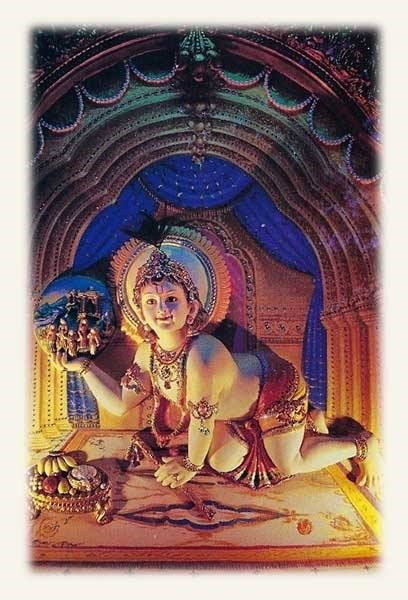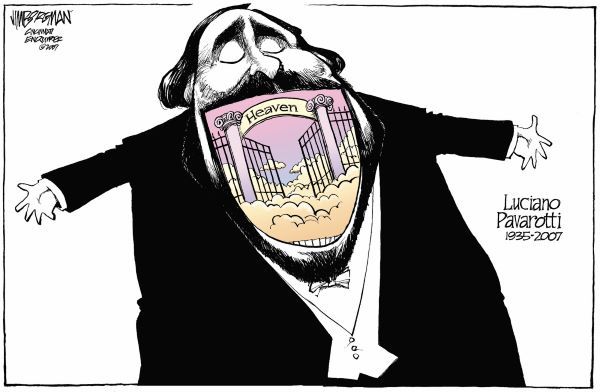The Grapevine Art & Soul Salon: World Voices
WORLD VOICES
Jonathan Knott, Host
To celebrate the life of Ravi Kumar, former host of this column, who died nearly a year ago and left us missing his company here in The Grapevine, we are reminding readers of how the World Voices column got started back in 2004 as a result of Barbara meeting Ravi and co-teaching with him a course in cultural competency. When you finish reading this page, go to Museum and enjoy our tribute to this remarkable man. The links to all his writing for The Grapevine will also be copied to his Museum Chamber. Along with them, we will be placing other memories of Ravi through pictures and verbal tributes from friends.
For this issue, we are bringing back a piece Barbara Knott wrote that celebrates the culture Ravi came from in India, a culture that recognized the value and interest in plurality among the gods that guide our notions of what life is all about. Here is her introduction to Lord Krishna and the metaphor of worldmaking.
Barbara Knott: Metaphor Makes a World
Along with the invention of writing came the possibility of reading stories and poems from ancient times and other places. A story I like very much, about Lord Krishna and his mother, comes from long ago in India (cited in David L. Miller, p. 73).
"One day when the children were playing, they reported to Yashodha, the mother of Krishna (who was an incarnation of the god Vishnu), 'Krishna has eaten dirt!' Yashodha took Krishna by the hand and scolded him and said, 'You naughty boy, why have you eaten dirt?' 'I haven't,' said Krishna. 'All the boys are lying. If you believe them instead of me, look at my mouth yourself.' 'Then, open up,' she said to the god, who had in sport taken the form of a human child. And he opened his mouth.
Then she saw in his mouth the whole universe, with the far corners of the sky, and the wind, and lightning, and the orb of the earth with its mountains and oceans, and the moon and stars, and space itself; and she saw her own village and herself. When she had come to understand true reality in this way, God spread his magic illusion in the form of maternal love. Instantly Yashodha lost her memory of what had occurred. She took her son on her lap and was as she had been before, but her heart was flooded with even greater love for God, whom she regarded as her son."
When I read that the first time, my mouth fell open in a shock of delight. Eventually, I realized that we all have a whole world inside us. And we can "mouth" what we are doing in conversation or shape it in writing to share with others at a distance or in the future. We have imagination to shape a world and play in it.
The most wonderful technique for worldmaking is metaphor, the result of a process in which we bring two apparently different things into an overlap so that each partakes of the other. Example: A human is a strong, proud oak tree with roots reaching deep into the ground of being, while trunk and branches reach up and out to make contact through leaves with the living, breathing cosmos. If I'd said, "A human is like a strong, proud oak tree," that would be what we call a simile and would contain its own truth but it would be more distant that my saying, "A human is a strong, proud oak tree," using the metaphoric form to assert vigorously the kinship between humans and trees. It is, in practice, through metaphor that we experience our kinship with all life, our place in the world of creation.
Rilke says in his Duino Elegies (p. 85) that there is in poetic metaphor the waking of a likeness within us. He was working with this motif when he wrote, "If we surrendered to earth's intelligence, we could rise up rooted, like trees." And so is David Whyte when he asks, "What shape waits in the seed of you to grow and spread its branches against a future sky?" (Both poets are cited in Miller, p. 73.)
Rilke, like D. H. Lawrence, was suffering from the sense of isolation and alienation from nature that came with an industrial revolution followed by a world war. Both worked through metaphors to reconnect with the natural roots of our being as humans. Lawrence speaks here on how love suffers when we are alienated from our world:
Oh, what a catastrophe, what a maiming of love when it was made a personal, merely personal feeling, taken away from the rising and the setting of the sun, and cut off from the magic connection of the solstice and equinox! This is what is the matter with us, we are bleeding at the roots, because we are cut off from the earth and sun and stars, and love is a grinning mockery, because, poor blossom, we plucked it from its stem on the Tree of Life, and expected it to keep on blooming in our civilized vase on the table. ("A Propos of Lady Chatterley"s Lover" in W. Roberts and H. Moore, eds. Phoenix II, 1968. Cited in Dolores LaChapelle, pp. 253-4.)
The metaphoric imagination, together with musical sensibility and the yearning to say something meaningful, creates poetry. Some who study the human psyche like David Miller in mythology and James Hillman in psychology, speak of a poetic basis of mind, referring to soulful imaginative possibilities and root metaphors rather than rationalistic interpretations.
The metaphor of flowering illustrates how much humans are akin, not only to trees, but to plants that blossom, to flowering. Flowering is one of the most powerful metaphors for life, with links to the female sex and to a woman's most intimate body part. Rooting, stemming, budding, blossoming are staples in our metaphorical repertoires. Hence, the abundance of flowers associated with courting, decorating, scenting, and having sex.
For example, Eros, the Greek god of love who gave us the word erotic, is often found in a flowering field, suggesting the fertility of imagination. D. H. Lawrence declares that All living beings must move toward a blossoming (cited in LaChapelle, p. 254). And in the ecology movement, Arne Naess is an environmental activist who believes that Every form of life has the equal right to live and blossom. (cited in LaChapelle, p. 254). Bill Plotkin, in Soulcraft (p. 43) gives us this vision:
Even in our synthetic, egocentric society, the soul stirs in our subterranean depths, endlessly calling, pushing up like a flower through the cracks in the concrete pavement of our lives. We catch glimpses in our dreams and in fragments of poetry and song, in the distant howl of a coyote or in a bird's sudden flight, in sunsets and the rapture of romance.
Metaphor functions to bring the reader into the poem and back into the land, the landscape, the world of nature. We have invented the word inscape to make the connection between the world out there that we experience through our senses and the world in here that we experience psychically, though imagination. Metaphor is fundamental to poetry and to being human.
David Abram gives this advice to writers (pp. 273-4):
Our craft is that of releasing the budded, earthly intelligence of our words, freeing them to respond to the speech of the things themselves, to the green uttering forth of leaves from the spring branches. It is the practice of spinning stories that have the rhythm and lilt of the local sound-scape, tales for the tongue, tales that want to be told, again and again, sliding off the digital screen and slipping off the lettered page to inhabit these coastal forests, those desert canyons, those whispering grasslands and valleys and swamps. Finding phrases that place us in contact with the trembling neck-muscles of a deer holding its antlers high as it swims toward the mainland, or with the ant dragging a scavenged rice-grain through the grasses. Planting words, like seeds, under rocks and fallen logs,"letting language take root, once again, in the earthen silence of shadow and bone and leaf."
I have quoted Abram at length to give you a strong taste of his way with words in enacting what he is talking about, and of the delicious pleasure in reading this "writing language back into the land," his way of finding himself and communicating to us what he has found: a treasure that far surpasses the abstraction of money and its purchase on our lives.
And now, the irony (and the subject for another idea to entertain on another day):
I took from my study of D. H. Lawrence's concept of quickness this passage from The Trespasser. Lettie to George:
"You are blind; you are only half-born; you are gross with good living and heavy sleeping. Things don't flower if they are overfed. You have to suffer before you blossom in this life." These lines from David Whyte's book of poems The House of Belonging bring an even more shocking thought:
I look out
at everything
growing so wild
and faithfully beneath
the sky
and wonder
why we are the one
terrible
part of creation
privileged
to refuse our flowering.
Sources
David L. Miller, Three Faces of God: Traces of the Trinity in Literature and Life (Philadelphia: Fortress Press, 1986, p. 73). He found the Hindu story cited in Wendy Doniger O'Flaherty's "Inside and Outside the Mouth of God: The Boundary between Myth and Reality," Daedalus (Spring 1980), 95.
Rainer Maria Rilke, Duino Elegies, trans. J. Leishman and S. Spender (New York: W.W. Norton, 1939), 85.
Dolores LaChapelle, Sacred Land, Sacred Sex, Rapture of the Deep: Concerning Deep Ecology and Celebrating Life. Silverton, CO: Finn Hill Arts, 1988.
D. H. Lawrence, The Complete Poems of D. H. Lawrence, Ware, Hertfordshire: Wordsworth Poetry Library, 1994, p. 627.
Dick Russell, The Life and Ideas of James Hillman, Vol. 1: The Making of a Psychologist, New York: Helios Press, 2013, p. 233.
Bill Plotkin, Soulcraft, Novato, California: New World Library, 2003. p. 43.
David Abram, The Spell of the Sensuous: Perception and Language in a More-Than-Human World, New York: Random House, 1996, pp. 116-7 and 273-4.
D. H. Lawrence. The Trespasser, BiblioBazaar, 2006.
David Whyte, The House of Belonging, 1st ed. Many Rivers Press; December 1997.
The photo of Krishna below was on a picture postcard sent to me some years back from India by friends Bill and Pearla Kennedy. I keep it on my desk in a stand designed to hold a pen and pad, to remind me of what's what in worldmaking. The one under it caught my attention while I was working on this piece. In a wonderful metaphorical sense, Pavarotti also held the whole world in his mouth. Perhaps you do, too. Smile!


Copyright 2021, Barbara Knott. All Rights Reserved.